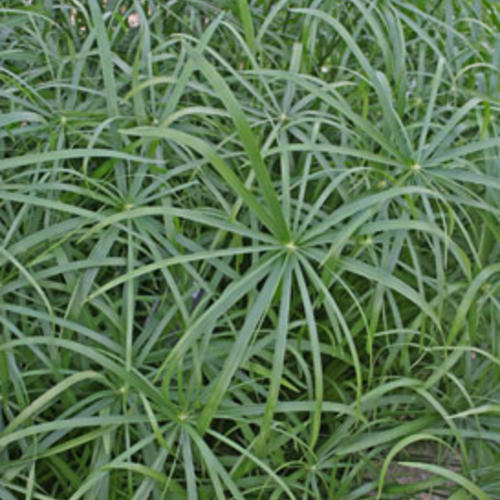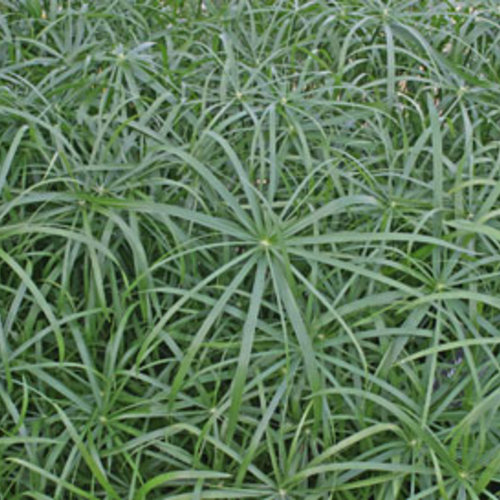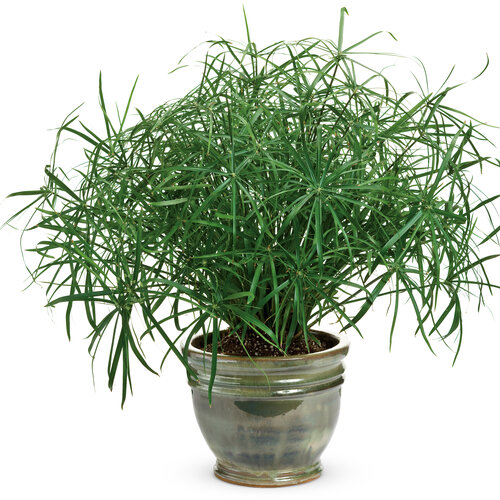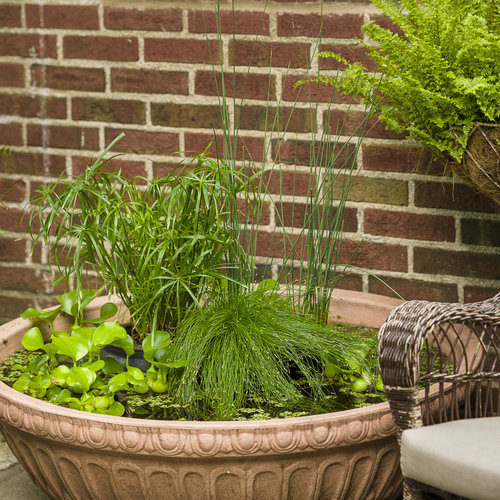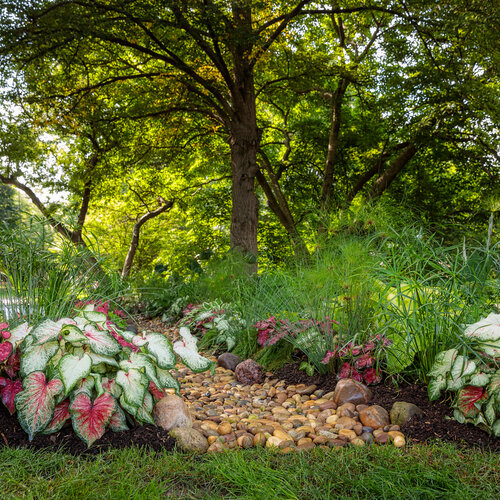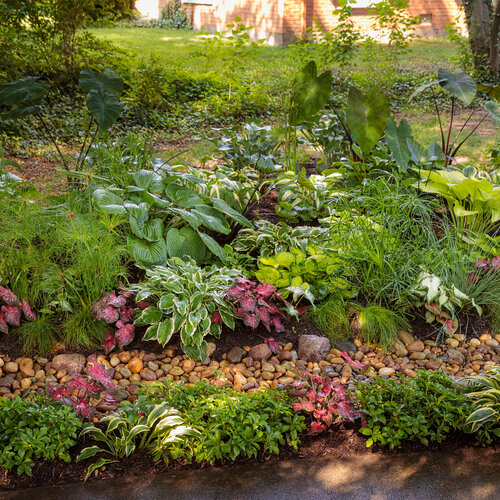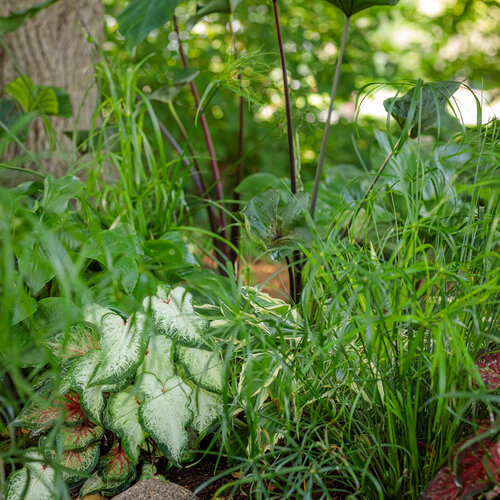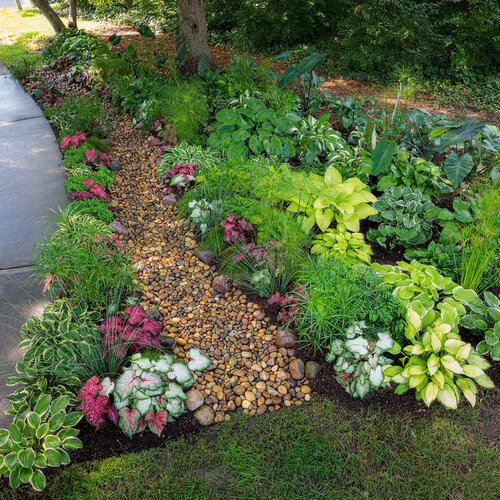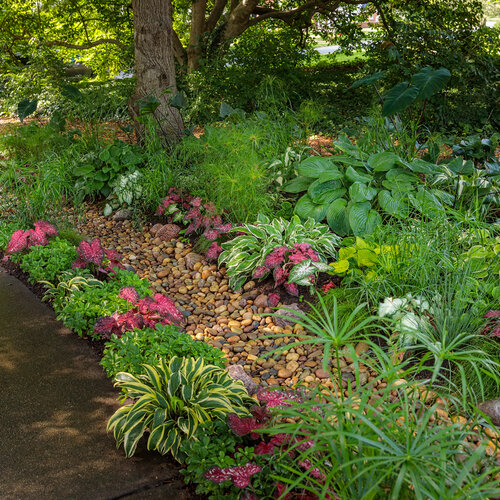Graceful Grasses® Baby Tut® Umbrella Grass Cyperus involucratus
1 Gallon Pot
-
DETAILS
FEATURES
A water garden friendly-grass that can be planted in the landscape as well
Award WinnerFoliage InterestHeat TolerantDeadheading Not NecessaryWater PlantGrass:GrassCHARACTERISTICS
Plant Type:AnnualHeight Category:MediumGarden Height:18 - 24 Inches46cm - 61cmSpacing:14 - 20 Inches 36cm - 51cmSpread:18 - 24 Inches 46cm - 61cmFoliage Colors:GreenFoliage Shade:GreenHabit:MoundedContainer Role:FillerPLANT NEEDS
Light Requirement:Part Sun to SunThe optimum amount of sun or shade each plant needs to thrive: Full Sun (6+ hours), Part Sun (4-6 hours), Full Shade (up to 4 hours).
Maintenance Category:EasyBloom Time:Grown for FoliageHardiness Zones:9a, 9b, 10a, 10b, 11a, 11bWater Category:AverageSoil Fertility Requirement:Average SoilUses:ContainerGrassLandscapeUses Notes:Use in water gardens, landscapes and mixed containers
Maintenance Notes:Cyperus is not hardy enough to survive winters with freezing temperatures and it is not a candidate to overwinter inside.
This plant can sometimes be aggressive in frost-free winter climates, if it is grown in constantly moist conditions.
It is a very fast grower and will quickly grow to impressive size when replanted in the spring.
The plant can be planted in pots, along the waters edge of a pond, or even in a pond. The crown of the plant should never be covered in water and in fact both of these varieties can thrive in water as shallow as a few inches. The purpose is to keep the bulk of the soil or root mass wet.
The root ball can be submerged but it isn't necessary. If the plant is put into a pot I would suggest plugging the hole or holes in the bottom of the pot to keep as much water as possible in the potBaby Tut can also be planted in regular garden soil. It is best to keep the soil moist, but once established Baby Tut can tolerate some dry soil conditions.
Baby Tut is an evergreen or neutral grass. Where temperatures get colder than 25 degrees F, the plants should be treated as annuals. Once the grass turns brown it can either be removed immediately or removed in the spring. It should not be expected to live through the winter and begin growing again in the spring.
In areas where winter temperatures remain above 25 degrees it should be considered a perennial and the following information should be useful.
Evergreen or neutral grasses are usually plants that look like grasses but aren't actually classified as grasses, they are generally called grass-like plants.
Divide evergreen or neutral grasses and grass-like plants in spring only.
Evergreen grasses don't ever go dormant. Dividing plants wounds them to some degree. For evergreen grasses this wounding will really affect their ability to live through the winter.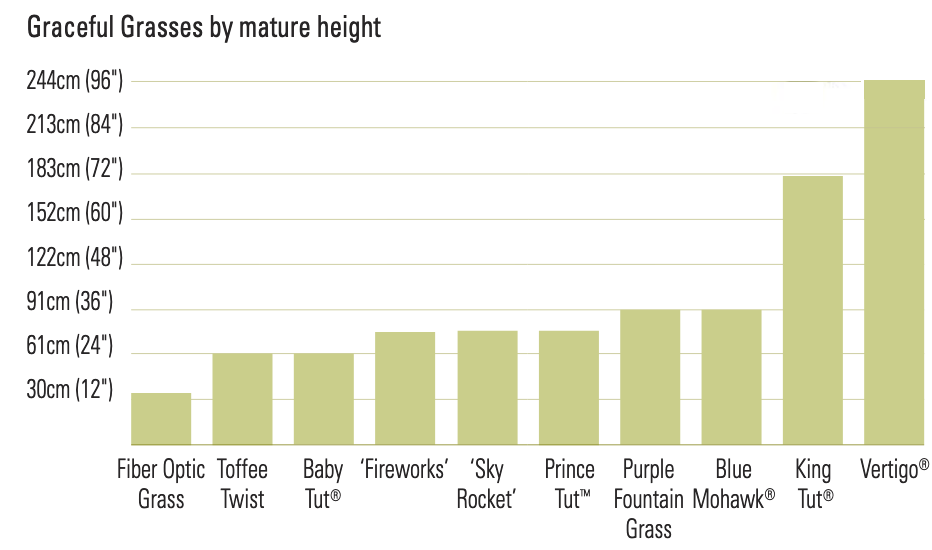
Pictures and Information Copied from Proven Winners


